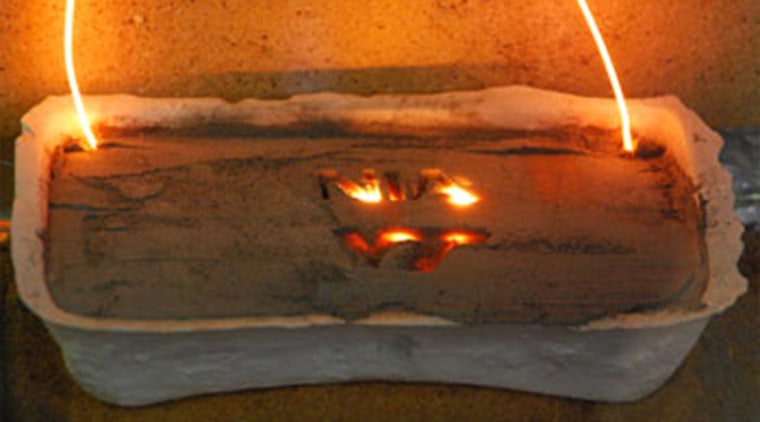Take some moon dust, add some ground up spaceship, zap the mix with electricity, and presto! Moon bricks.
Astronauts living on the moon could someday use such a formula to construct an interlocking, virtually indestructible dome-shaped home.
"The habitat would look just like an igloo," said Kathryn Logan, a professor at Virginia Tech involved in the project. "No nails, no cement would be necessary to hold it together. The shape of the bricks will do that."
The moon bricks were created as part of the Pacific International Space lunar exploration and colonization. The VT team won one of two prizes in this year's competition. A team from Massachusetts Institute of Technology won the other prize.
The VT team's goal was to create a home for visiting astronauts using readily available materials, also known as in situ resource utilization. Regolith is the main rock found on the moon. Aluminum would come from the vehicle the astronauts used to reach the moon, but would have to be ground up first. Solar chargers would provide the necessary electricity.
Since real moon rock isn't readily available here on Earth, the VT scientists used a NASA-approved regolith substitute, basically volcanic ash, as a medium to experiment with, and tested the reaction on a Hawaiian volcano.
Two wires stuck into the mixture provide the literal spark that begins the reactions. Once the reaction begins, astronauts would have to step back quickly. Temperatures can reach 1,500 degrees C. Sparks shoot out like a Fourth of July sparkler. The reaction continues until all the mixture is consumed.
Any shape or size can be produced, from small, interlocking bricks to solid landing pads. Creating an entire residence in a few minutes would even be possible, if the team finds a way to hold the powder in place while the reaction proceeds.
The reaction is known as a thermite reaction, and is used to weld metal together or create ceramics. Logan came up with the idea to form moon bricks because she helped develop tank armor using a similar reaction when she worked at Georgia Tech.
Like tanks, moon brick buildings would be tough and protect the residents inside them. A moon brick home would survive most meteor strikes. It would also shield astronauts from most radiation, according to initial tests run by the VT team.
While strong, a moon brick Voissoir dome home would likely be drafty. Some kind of membrane would be have to be installed to keep air from leaking out if humans were to live inside a moon brick dwelling.
A more likely scenario is to use the technology to create landing pads, launch pads, protected sheds for equipment, and the like, said Jerry Sanders, who studies in-situ resource utilization at NASA.
"It's an intriguing idea and an interesting technology," said Sanders. "But whenever we look at in situ resource utilization, you have to weigh the cost of the equipment and materials necessary."
Moon bricks don't require many raw materials, but other in situ technologies, like brick-baking microwaves, require even less. A final decision on which specific technology to use when man returns to the moon is still years away however, giving all contenders plenty of time to improve on their models.
